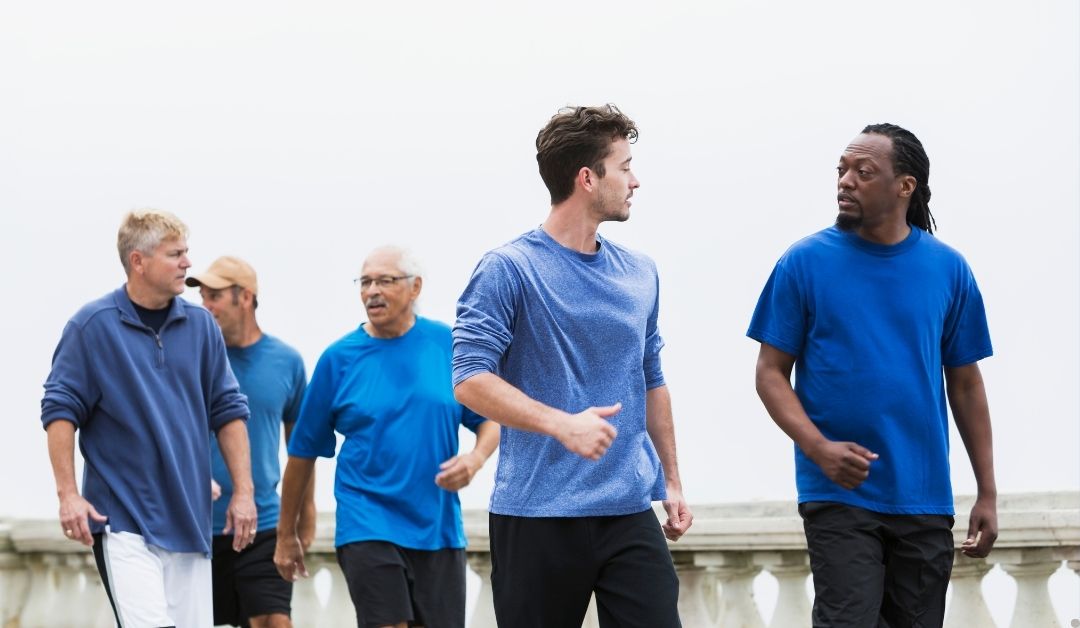September is Prostate Cancer Awareness Month. Prostate cancer is the most commonly diagnosed cancer in Australia, with nearly 26,000 men receiving the news each year.
Prostate health might not be the first thing that comes to mind when we talk about movement and exercise — but it should be.
At SPHC, we often work with men dealing with pelvic health concerns, many of which are linked to the prostate. Whether it’s managing symptoms, recovering after treatment, or reducing your risk, the right kind of movement can make a real difference.
Let’s break it down: how moving well can help you protect your prostate.
First, a Quick Refresher: What is the Prostate?
The prostate is a small gland that sits just below the bladder in men and surrounds the urethra. Its main role is to produce fluid for semen. While it’s often ignored in younger years, prostate issues become increasingly common with age, including:
- Benign Prostatic Hyperplasia (BPH) – an enlarged prostate
- Prostatitis – inflammation of the prostate
- Prostate Cancer – the most commonly diagnosed cancer in Australian men

Movement & Prostate Health: What’s the Link?
Here’s how staying active helps support prostate health:
1. Regular Exercise May Reduce Risk of Prostate Cancer
Research shows that regular physical activity can lower the risk of developing prostate cancer — especially moderate to vigorous exercise like brisk walking, cycling, swimming, or resistance training.
Exercise helps by:
- Reducing inflammation
- Supporting hormonal balance
- Managing body weight (obesity is linked with more aggressive prostate cancers)
Physio tip: Aim for at least 150 minutes of moderate exercise per week – even walking counts!
2. Pelvic Floor Exercises for Prostate Support
Many people associate pelvic floor training with women, but men have pelvic floor muscles too — and they’re critical for bladder control, sexual function, and prostate support.
These muscles can weaken with age or after prostate surgery, leading to:
- Urinary incontinence
- Reduced sexual performance
- Pelvic discomfort
Pelvic floor physiotherapy helps men:
- Identify and correctly activate these muscles
- Build strength and endurance
- Improve post-surgery recovery and overall pelvic health
Not sure how to do pelvic floor exercises? A physio can guide you safely and effectively.
3. Exercise Supports Mental Wellbeing
Let’s not forget the emotional side of prostate health. A diagnosis or ongoing symptoms can affect confidence, relationships, and quality of life.
Movement is a proven way to:
- Reduce anxiety and depression
- Boost mood and energy
- Create a sense of control and confidence
Group classes, walking clubs, or regular physio sessions can also add a valuable social connection.
4. Post-Surgery Rehab: Physio is Essential
If you’ve had prostate surgery (like a prostatectomy), rehab is crucial. A physio can help with:
- Pelvic floor retraining
- Gradual return to physical activity
- Managing scar tissue, pain, or stiffness
- Restoring strength and function
The earlier you start rehab, the better your long-term outcomes.
Start Moving Safely with Help from SPHC!
It’s never too late to make movement a priority. Whether you’re managing a current prostate condition or just looking to stay proactive about your health, the right exercise — tailored to your body and needs — can make a world of difference.
At our clinic, we offer professional Physiotherapy and:
- Pelvic floor assessments for men
- Exercise plans tailored to prostate health
- Safe return-to-activity guidance after treatment or surgery
Take the first step and book an assessment today to chat about your health goals, and let’s build a movement plan that keeps you strong, supported, and confident.
Call today on 07 3869 1099.
You can also find out more helpful information at –

